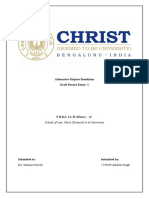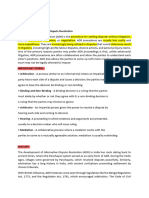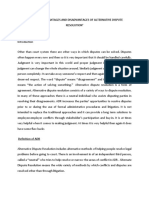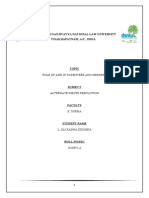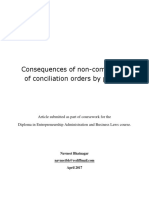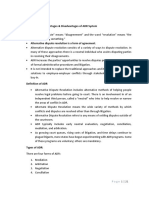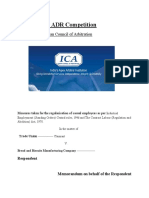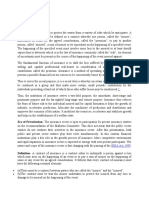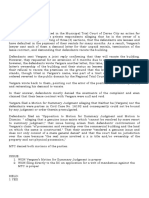0% found this document useful (0 votes)
23 views10 pagesADRS Internals
ADRS, or Alternative Dispute Resolution System, is a mechanism in India that resolves disputes outside traditional courtrooms, thereby reducing court backlogs and ensuring quicker justice. It includes various methods such as arbitration, mediation, conciliation, negotiation, and Lok Adalat, each with its own characteristics and applications. While ADR offers advantages like cost-effectiveness, time efficiency, and confidentiality, it also has disadvantages such as lack of legal precedent and potential power imbalances.
Uploaded by
Aradhya SureshCopyright
© © All Rights Reserved
We take content rights seriously. If you suspect this is your content, claim it here.
Available Formats
Download as PDF, TXT or read online on Scribd
0% found this document useful (0 votes)
23 views10 pagesADRS Internals
ADRS, or Alternative Dispute Resolution System, is a mechanism in India that resolves disputes outside traditional courtrooms, thereby reducing court backlogs and ensuring quicker justice. It includes various methods such as arbitration, mediation, conciliation, negotiation, and Lok Adalat, each with its own characteristics and applications. While ADR offers advantages like cost-effectiveness, time efficiency, and confidentiality, it also has disadvantages such as lack of legal precedent and potential power imbalances.
Uploaded by
Aradhya SureshCopyright
© © All Rights Reserved
We take content rights seriously. If you suspect this is your content, claim it here.
Available Formats
Download as PDF, TXT or read online on Scribd
/ 10





